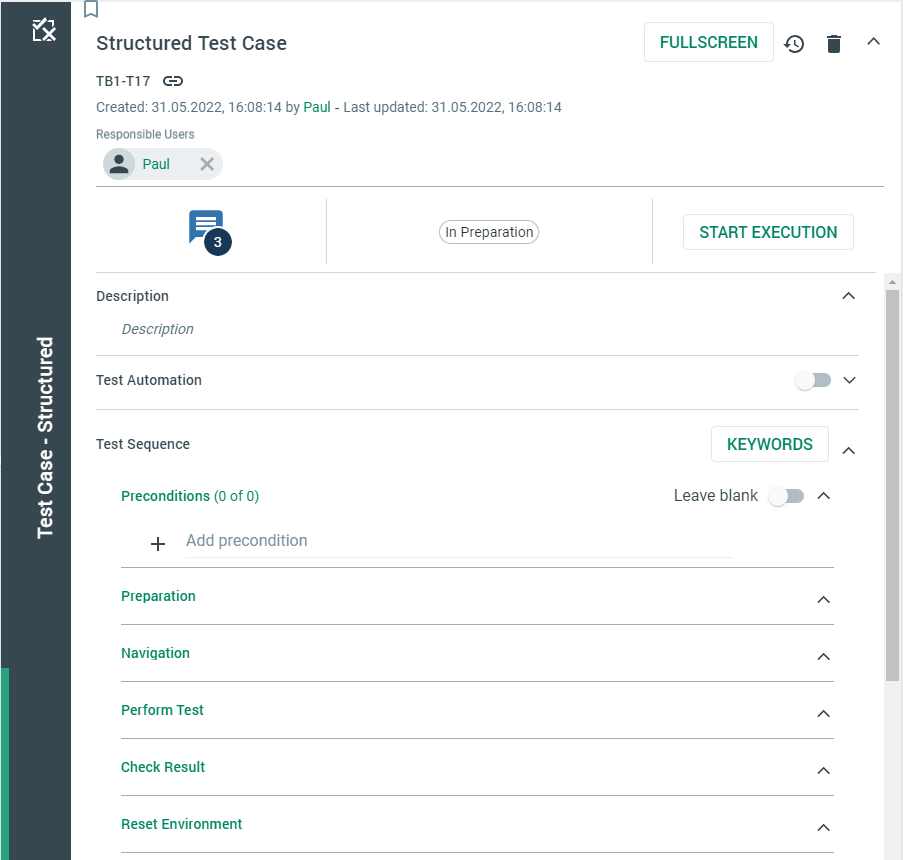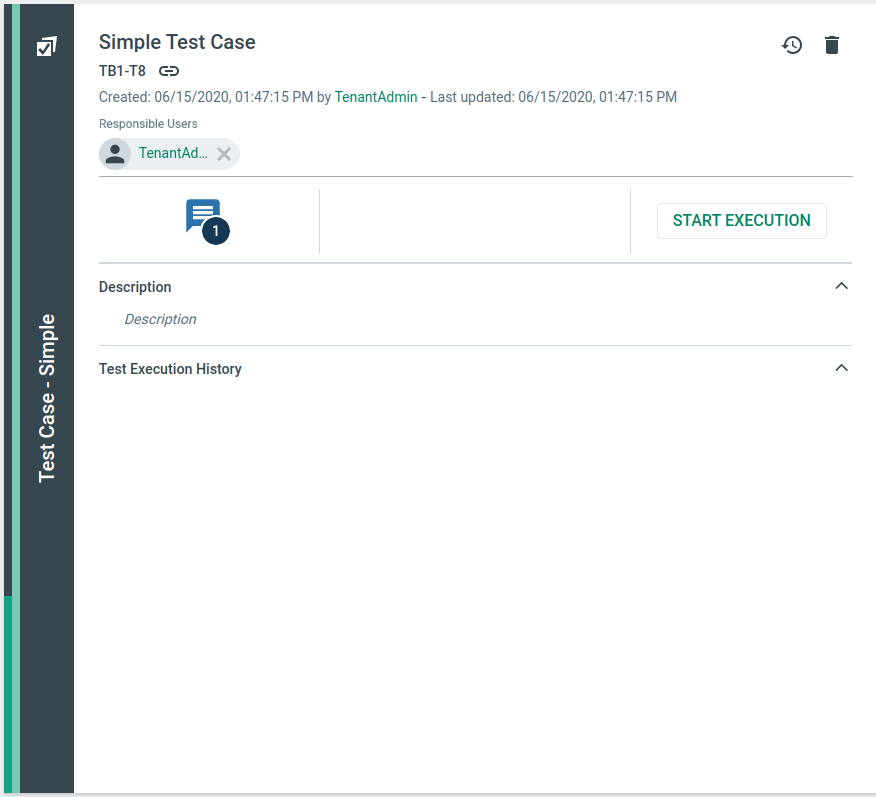Test Cases
Test Cases are the elements that contain the test specification.
Usually, Test Cases are linked to a User Story. You add a Test Case in the detailed view of a User Story by clicking the Plus button on the right, which directly links the Test Case to that User Story.
Alternatively, you can also add a so-called Free Test Case in the Specification Screen, aka Product Overview, by clicking the Plus button. It differs from Test Cases in that it has no link to a User Story. Free Test Cases must therefore be accessed directly from the Product Overview.
The following description is valid for both Test Cases' variants, except for the link to a User Story.
You can add multiple Test Cases if you check the "Create multiple" checkbox as shown in the figure below for more options.

There are three types of Test Cases: Structured Test Case, Checklist Test Case, and Simple Test Case. By default, a Structured Test Case is added. By clicking on the button with the three dots, you can select one of the other two Test Case types or select a template with predefined values if it has been previously created. For more details on creating templates, please refer to Templates.
 Create a Test Case.
Create a Test Case.The name, responsible user, and description are used in the same way as in Epics and User Stories.
Dependent on the Test Case type, different sections are displayed.
For the type Structured Test Case, these are the sections description, test automation, and test sequence.
For detailed information about Test Sequence, see chapter Test Sequence.
Structured Test Case:

A Structured Test Case directly after creation.
For the type Checklist Test Case, these are the sections description and checklist steps.
Checklist Test Case:

A Checklist Test Case directly after creation.
For the type Simple Test Case, this is only the section description.
Simple Test Case:

Just like User Stories, Test Cases are linked to their parent element. To the left of the Test Case, you can see the associated Epic and User Story, as in the figure below.
 Path from Epic to Test Case.
Path from Epic to Test Case.
This icon, displayed in the header of a Test Case, indicates how many Activities remain to be done for that Test Case before it is ready and how urgent they are. Clicking on the icon shows what these Activities are. For detailed information about Activities, see also chapter Activities.

Six open Activities.
By clicking the "START EXECUTION" button, you can start the execution of the Test Case. For detailed information on Test Execution, see chapter Test Execution.

For detailed information about Test Execution History, see chapter Test Execution History.
For detailed information about Test Automation, see chapter Test Automation.